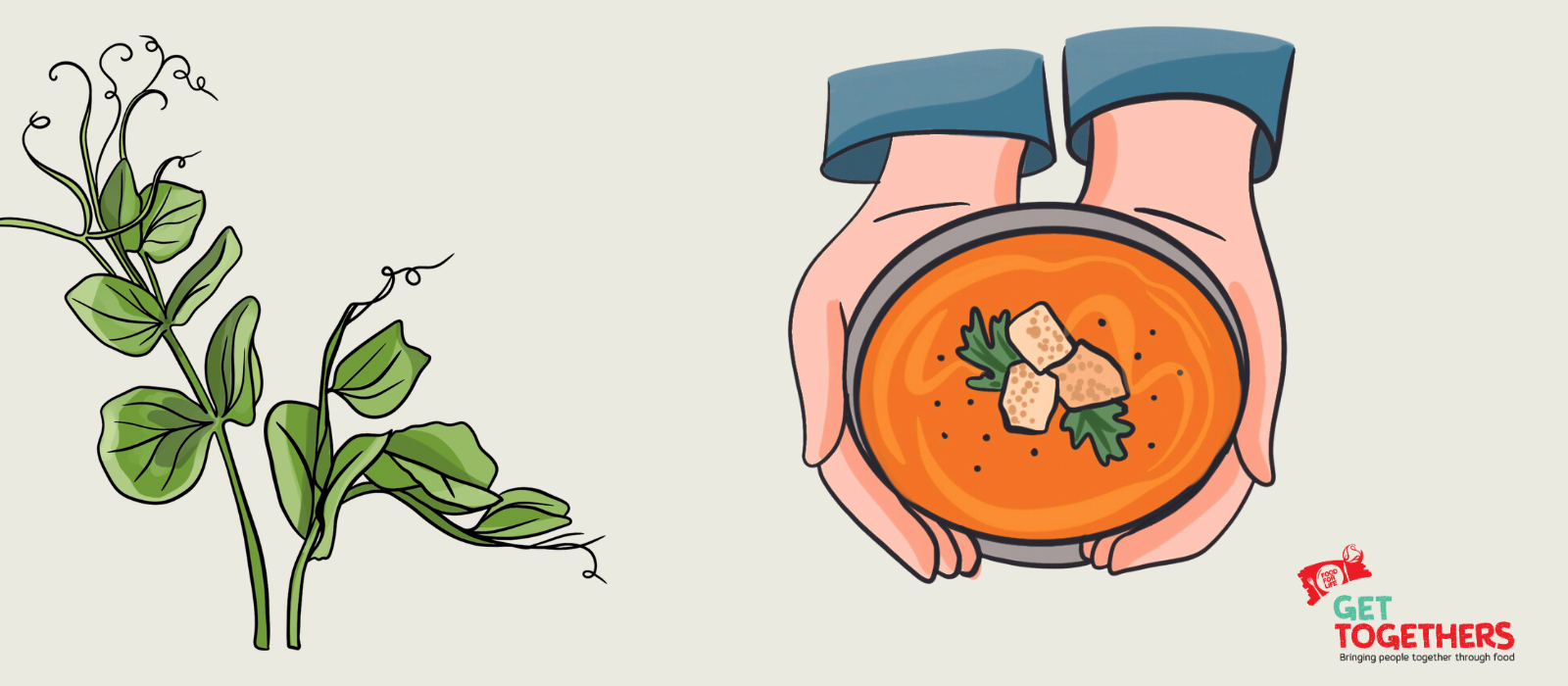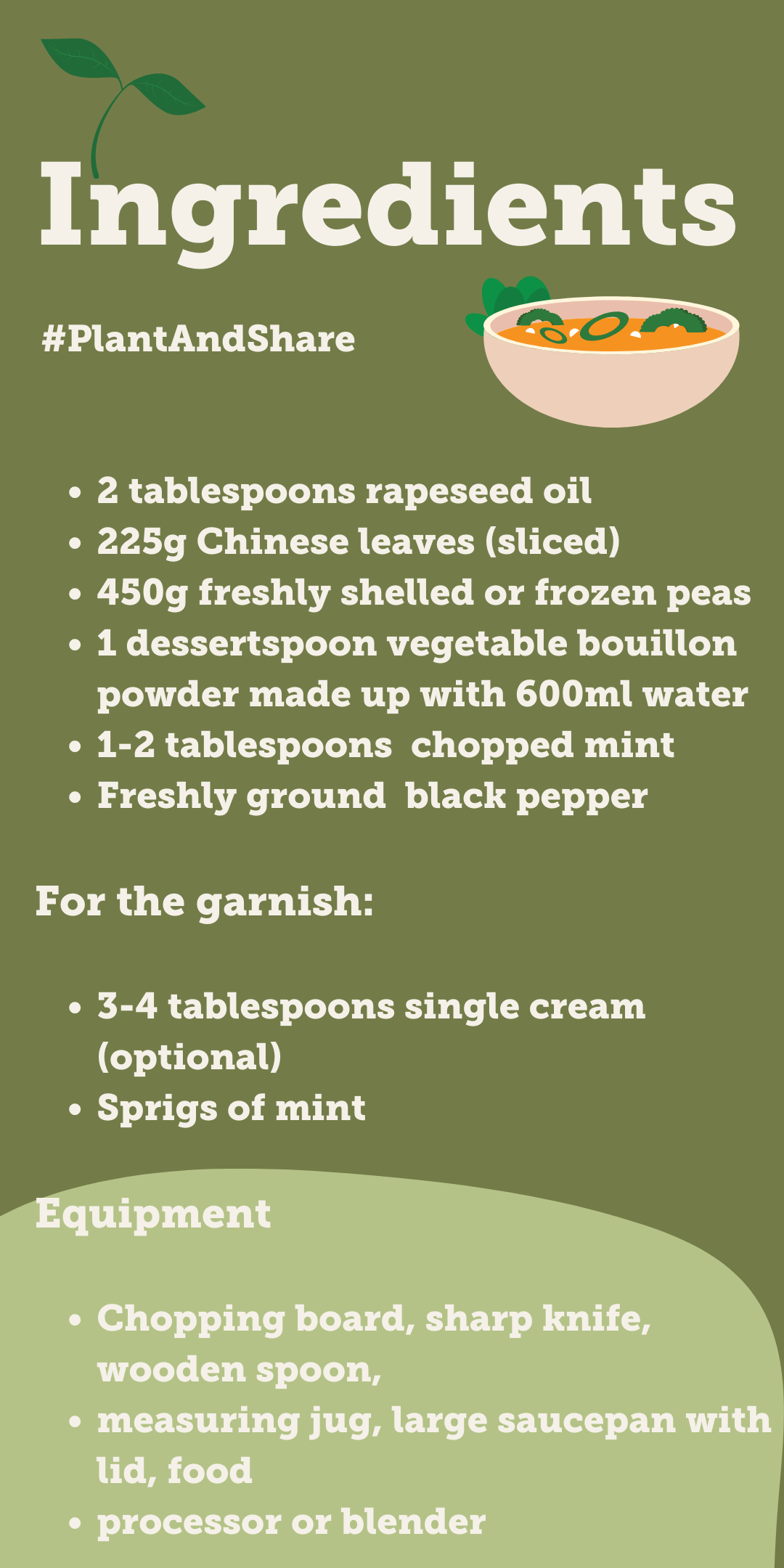
- Soil Association
- Causes and campaigns
- Plant and share month - how to group pea and mint soup

How to grow soup
To celebrate Plant and share month we want to make it easy for everyone to give growing a go! Follow the steps below to grow your own pea and mint soup!
Download this resource as a PDF so you print it out.
Grow your peas...
1. Prepare your beds
If you want to grow peas in the spring, it’s a good idea to dig lots of garden compost or manure into a bed at the end of the previous autumn or winter. You should also cover the bed with black polythene for a month before sowing to warm up the soil (as peas like warm soil!).
2. Plant your peas
Ideally you need to start in March, but if this is a Plant and Share Month activity either as the group leader to sow the seeds for you or if you can then get together before Plant and Share Month.
3. Pick perfect pods
Once your peas begin to flower, they need lots of water to fatten up the pods. Pick them regularly to encourage the production of more peas – as peas left to mature on the plant will stop it flowering and fruiting.
4. Next year...
Peas have clever roots that lock nitrogen into the soil, so when your peas are all done, cut the foliage down and dig the roots into the soil. This nitrogen-rich bed is now the perfect place to grow potatoes next year!


Grow your mint...
1. Pot your plant
In spring, take the small mint plant and put it into a larger plant pot using general multipurpose compost. Sink this whole pot into the ground – the pot will act as a barrier and stop the mint taking over your garden!
2. Keep it in mint condition
Mint will thrive in a sunny spot but it can also handle some shade. Keep the soil moist over the summer and feed it with a liquid fertiliser every few weeks. It’s also good to keep harvesting mint throughout the summer to encourage new growth.

Show the children
- How to pod peas 1
- The claw technique to slice the Chinese leaves
- How to make up stock and measure liquids
- How to snip herbs with scissors in a jug
- Garnishing techniques
Under supervision, children can:
- Pod peas
- Slice Chinese leaves using claw technique
- Measure liquids
- Snip herbs with scissors
- Swirl cream into soup as a garnish
Skills
- Claw knife technique, snipping herbs in a jug using scissors, using a jug to measure liquids, garnishing
Mint is a perennial plant so it’ll die in the winter and grow back in the spring.
Glossary
Drill
A drill is a straight, shallow groove in the soil, about 2cm deep, for sowing seeds.
Liquid fertiliser
Liquid fertilisers give plants the elements and nutrients they need to grow faster. Make your own by growing comfrey plants – just put the leaves in a bucket with water, cover, and leave in a dark corner for two weeks. This makes a potent brew of liquid fertiliser to feed all your plants.
Pea and mint soup recipe
How to make it
- Heat the rapeseed oil in a pan over a gentle heat, then add the Chinese leaves and peas.
- Put the pan lid on and cook without browning for 5 minutes, stirring occasionally.
- Add the water and stock, then bring to the boil and simmer for 15 minutes. Cool it a little.
- Using a blender or food processor, whizz until completely smooth, stir in chopped mint and season to taste.
- Reheat gently and garnish with cream and mintsprigs. Or to serve cold, chill for around 1½ to 2 hours and garnish just before serving. 49 Pea and Mint Soup
Before you begin
- Prepare your ingredients to a suitable level depending on the age and previous experience of the participants
- Present your equipment and ingredients logically on the table to support your teaching and learning (we cal this a set out)
- Make sure everyone removes any rings and nail varnish, ties their hair back, washes their hands and puts an apron on
- Discuss the ingredients and equipment - what they are, how to weigh and measure ingredients and what you’ll be doing in the lesson




